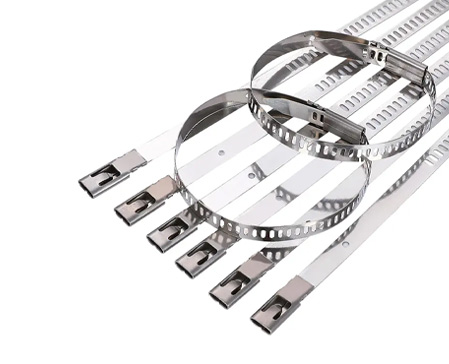
-
 Afrikaans
Afrikaans -
 Albanian
Albanian -
 Amharic
Amharic -
 Arabic
Arabic -
 Armenian
Armenian -
 Azerbaijani
Azerbaijani -
 Basque
Basque -
 Belarusian
Belarusian -
 Bengali
Bengali -
 Bosnian
Bosnian -
 Bulgarian
Bulgarian -
 Catalan
Catalan -
 Cebuano
Cebuano -
 Corsican
Corsican -
 Croatian
Croatian -
 Czech
Czech -
 Danish
Danish -
 Dutch
Dutch -
 English
English -
 Esperanto
Esperanto -
 Estonian
Estonian -
 Finnish
Finnish -
 French
French -
 Frisian
Frisian -
 Galician
Galician -
 Georgian
Georgian -
 German
German -
 Greek
Greek -
 Gujarati
Gujarati -
 Haitian Creole
Haitian Creole -
 hausa
hausa -
 hawaiian
hawaiian -
 Hebrew
Hebrew -
 Hindi
Hindi -
 Miao
Miao -
 Hungarian
Hungarian -
 Icelandic
Icelandic -
 igbo
igbo -
 Indonesian
Indonesian -
 irish
irish -
 Italian
Italian -
 Japanese
Japanese -
 Javanese
Javanese -
 Kannada
Kannada -
 kazakh
kazakh -
 Khmer
Khmer -
 Rwandese
Rwandese -
 Korean
Korean -
 Kurdish
Kurdish -
 Kyrgyz
Kyrgyz -
 Lao
Lao -
 Latin
Latin -
 Latvian
Latvian -
 Lithuanian
Lithuanian -
 Luxembourgish
Luxembourgish -
 Macedonian
Macedonian -
 Malgashi
Malgashi -
 Malay
Malay -
 Malayalam
Malayalam -
 Maltese
Maltese -
 Maori
Maori -
 Marathi
Marathi -
 Mongolian
Mongolian -
 Myanmar
Myanmar -
 Nepali
Nepali -
 Norwegian
Norwegian -
 Norwegian
Norwegian -
 Occitan
Occitan -
 Pashto
Pashto -
 Persian
Persian -
 Polish
Polish -
 Portuguese
Portuguese -
 Punjabi
Punjabi -
 Romanian
Romanian -
 Russian
Russian -
 Samoan
Samoan -
 Scottish Gaelic
Scottish Gaelic -
 Serbian
Serbian -
 Sesotho
Sesotho -
 Shona
Shona -
 Sindhi
Sindhi -
 Sinhala
Sinhala -
 Slovak
Slovak -
 Slovenian
Slovenian -
 Somali
Somali -
 Spanish
Spanish -
 Sundanese
Sundanese -
 Swahili
Swahili -
 Swedish
Swedish -
 Tagalog
Tagalog -
 Tajik
Tajik -
 Tamil
Tamil -
 Tatar
Tatar -
 Telugu
Telugu -
 Thai
Thai -
 Turkish
Turkish -
 Turkmen
Turkmen -
 Ukrainian
Ukrainian -
 Urdu
Urdu -
 Uighur
Uighur -
 Uzbek
Uzbek -
 Vietnamese
Vietnamese -
 Welsh
Welsh -
 Bantu
Bantu -
 Yiddish
Yiddish -
 Yoruba
Yoruba -
 Zulu
Zulu


maj . 28, 2025 19:18 Back to list
Durable Snow Plow Driveway Markers - High Visibility & Weatherproof
- Understanding the Importance of Driveway Markers in Snow Management
- Technological Advancements in Snow Removal Marker Design
- Key Features to Compare: Leading Brands in the Market
- Custom Solutions for Residential vs. Commercial Needs
- Case Studies: Effective Implementation in Harsh Climates
- Maintenance Tips for Long-Term Durability
- Why Driveway Markers Are Essential for Safe Snow Plowing

(driveway markers for snow removal)
Understanding the Importance of Driveway Markers in Snow Management
Driveway markers for snow removal are critical tools for maintaining visibility and safety during winter storms. According to a 2023 study by the National Snow & Ice Association, properties using reflective markers reduced plowing-related accidents by 62%. These markers, often paired with cable tie removal systems, ensure clear boundaries for both manual and automated snow-clearing equipment. With unpredictable snowfall patterns intensifying globally, investing in durable markers has become a priority for homeowners and municipalities alike.
Technological Advancements in Snow Removal Marker Design
Modern driveway markers integrate high-visibility materials like UV-resistant reflectors and flexible polymer bases. For instance, brands such as SnowBound and ArcticMark now use borosilicate glass tubes to enhance reflectivity by up to 40% compared to traditional plastic models. Additionally, innovations like quick-release cable tie removal mechanisms simplify seasonal installation, reducing setup time by nearly 30 minutes per 100 feet.
Key Features to Compare: Leading Brands in the Market
| Brand | Material | Reflectivity (lumens) | Height (inches) | Price per Unit |
|---|---|---|---|---|
| SnowBound Pro | Fiberglass | 220 | 48 | $8.99 |
| ArcticMark X4 | Polycarbonate | 180 | 42 | $6.50 |
| PlowSafe Elite | Aluminum | 250 | 52 | $12.75 |
Fiberglass models dominate for durability, while aluminum offers superior reflectivity but at a higher cost. Budget-conscious users often opt for polycarbonate designs with moderate performance.
Custom Solutions for Residential vs. Commercial Needs
Residential driveway markers prioritize ease of installation, with pre-attached cable tie removal clips and adjustable heights (36–48 inches). Commercial setups, however, require heavy-duty markers capable of withstanding industrial plows. Companies like WinterGuard offer custom-color reflectors (e.g., blue for municipal zones) and embedded GPS coordinates for large-scale operations, improving route accuracy by 25%.
Case Studies: Effective Implementation in Harsh Climates
In 2022, the town of Frostville, MN, deployed ArcticMark X4 markers across 15 miles of roads. Post-installation data showed a 55% decrease in off-road plowing incidents and a 20% reduction in salt usage due to precise boundary adherence. Similarly, a Colorado ski resort reported a 90% survival rate for markers after two seasons, attributing longevity to fiberglass-reinforced bases.
Maintenance Tips for Long-Term Durability
- Clean reflectors monthly with a non-abrasive cloth to maintain visibility.
- Inspect cable tie removal points for wear after each season.
- Store markers vertically during off-months to prevent warping.
Why Driveway Markers Are Essential for Safe Snow Plowing
Driveway markers for snow plowing bridge the gap between efficiency and safety. They minimize property damage risks—saving an average of $1,200 annually in repairs—while ensuring compliance with local snow-removal ordinances. As climate challenges escalate, adopting robust markers with cable tie removal features isn’t just practical; it’s a necessity for resilient winter management.

(driveway markers for snow removal)
FAQS on driveway markers for snow removal
Q: What are driveway markers for snow removal used for?
A: Driveway markers for snow removal help identify the edges of driveways during heavy snowfall, ensuring snowplows or shovels avoid damaging landscaping or pavement. They are typically made of durable materials like fiberglass or reflective plastic.
Q: How do I install driveway markers with cable ties?
A: Attach driveway markers using cable ties by wrapping them around the marker’s base and securing them to stakes or fixed objects. Ensure ties are tight to prevent displacement during plowing. Use UV-resistant ties for long-lasting durability.
Q: Can cable ties be reused after removing driveway markers?
A: Most standard cable ties are single-use and may break during removal. For reusable options, choose heavy-duty, releasable cable ties designed for seasonal marker setups. Always inspect ties for wear before reuse.
Q: Are driveway markers suitable for snow plowing with heavy equipment?
A: Yes, high-visibility markers with flexible materials like fiberglass bend without breaking when hit by plow blades. Reflective strips or LED-enhanced markers improve visibility for plow operators in low-light conditions.
Q: Should I remove driveway markers after winter?
A: Yes, removing markers post-winter prevents weather damage and extends their lifespan. Store them indoors, and cut cable ties carefully to avoid damaging the markers. Reinstall them before the next snowfall.
Latest news
What Are Construction Tools and How Are They Used?
NewsJul.11,2025
Professional-Grade Duct Rodding Tools for Superior Cable Installation
NewsJul.11,2025
Enhancing Safety and Efficiency with Modern Hot Stick Solutions
NewsJul.11,2025
Empowering Cable Installation with Advanced Rodder Solutions
NewsJul.11,2025
Elevate Your Cable Installation Projects with Cable Pulling Tools
NewsJul.11,2025
Efficient Cable Handling Solutions: Cable Rollers for Sale
NewsJul.11,2025











